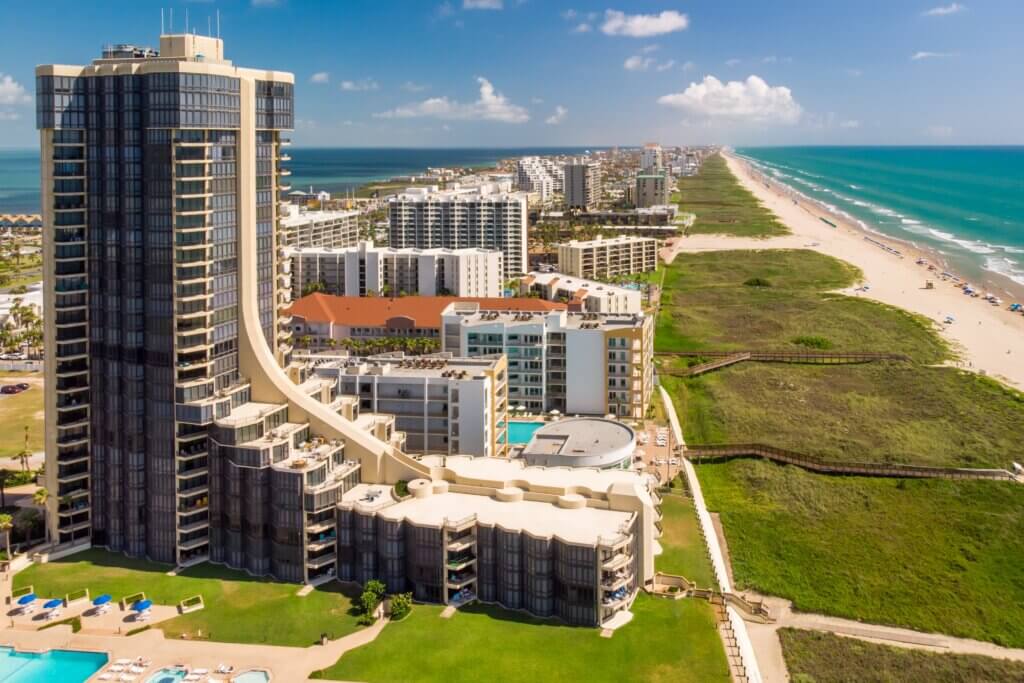Texas is among the most beautiful states with its white sand beaches, hillsides, hot springs, and towering pine trees. Unsurprisingly, many people rush to own a piece of this paradise. Investing in a second home is the best way for people to hold more of what Texas offers.
Whether you want a fun retreat, a vacation rental, or a retirement home, owning a second home in Texas is worth considering.
Owning a second home is the best way to enjoy more of what Texas offers. Understanding second home mortgage requirements and financing options is crucial to ensure that owning your dream home becomes a reality.
In This Article
What is a Second Home?
A second home is a second property where you spend time away from your primary residence. A second home is also commonly referred to as a vacation property. You may rent it out a few days each year, but the primary use is for yourself or your family.
If you vacation in the same place, it often makes financial sense to buy a second home there.
What are the Guidelines for a Second Home?
- Live in the house at least one month out of the year
- Be fifty miles from your current residence
- The house has only one unit
- The house cannot be rented out most of the year
- If the house is rented out, it cannot be managed by a property management company.
Useful Links (button links)
Can I Afford a Second Home?
Before buying a second home, it is important to make sure you have the financial capacity to afford one. Consider all the costs of owning a second home, not just the monthly mortgage payment.
These include the down payment, monthly payment, closing costs, utilities, property taxes, insurance, repairs, travel expenses, and upkeep.
Considering these expenses beforehand ensures you make a sound financial decision when purchasing a second home.
What is the Difference Between a Second Home Mortgage and a Primary Home Mortgage?
Different loan programs such as FHA, VA, and conventional loans are available for primary home mortgages. This is not the case when financing a second home mortgage. Loan options are limited for second home mortgages; you cannot use an FHA or VA loan.
There are multiple options to help primary home buyers with their down payment. Sometimes, payments can even be smaller or unnecessary for first-time home buyers. However, you must put in a larger down payment of at least 10-20% for a second home mortgage, depending on the lender.
Apart from these differences, the application process for a second home mortgage is the same as the primary residence mortgage process.
Related Article:

Understanding Non-Warrantable Condos and How to Secure a Mortgage for One
While there are many advantages to buying a condo, there are also some drawbacks. One significant drawback is obtaining a mortgage. There are two types of condos: warrantable and non-warrantable. Unfortunately, conventional mortgage lenders may not provide mortgages for non-warrantable condos.
Read MoreWhat are the Requirements for a Second Home Mortgage?
- Credit Score
A common misconception is that you need an exceptional credit score to buy a house. However, this is only sometimes the case. A 620-credit score is all you need to get your hands on closing papers for your second home.
Before you apply for any line of credit, check your credit score by looking at your credit report with one of the three credit bureaus. The information from your credit will help you identify any areas that need improvement or errors that need to be corrected.
- Down Payment
How much is a second home down payment going to cost you? Second-home or vacation home mortgages require down payments of at least 10-20%.
Calculating your down payment is easy. For instance, if you want to purchase a $400,000 house and want to put a 10% down payment, use the formula Percentage Down x Purchase Price = Down Payment. An example of using this formula is 0.10 x $400,000 equals $40,000.
Application Process for a Second Home Mortgage
What to Expect
- Pre-Approval
- Find a House
- Apply for Credit
- Closing
Pre-Approval
It is recommended that before you start house shopping, you first get a pre-approval letter from a lender. In competitive real estate markets, a buyer with a pre-approval will often stand out among other potential buyers.
Getting a pre-approval will also let you know the loan amount you qualify for. This keeps you from looking at houses out of your financial reach.
Find a Home
Choosing the perfect location for your second home is a significant decision. Maybe you want to be near family. Or you have always dreamed of owning a beachfront property. The possibilities are endless, but narrowing down your search is essential.
Invest time in researching the area you intend to buy in. This is especially important if you plan to rent your property temporarily. Make sure to determine if the area is suitable for short-term rentals.
Make sure to take the time to research real estate agents in the area and read their reviews. A Realtor will help you navigate the market and find the perfect property that suits your needs.
Apply for Credit
Once you have put an offer in on your second home, the next step is to apply for credit. Fortunately, the application process is straightforward. Once you get in touch with a loan officer, you will need to provide them with the necessary loan documents to move along with the progress of your loan.
During this time, you should hire a third-party home inspector to avoid unpleasant surprises after the closing.
Closing
Closing on a home can be a time-sensitive process when obtaining a mortgage. Whether you want to enjoy the holidays near a new fireplace or host a family reunion, whatever the reason, a quick closing on the house is essential. The average time from signing a contract to signing closing documents is typically 30 days.
Useful Tools
The Bottom Line
Owning a second home is the best way to enjoy more of what Texas offers. Understanding second home mortgage requirements and financing options is crucial to ensure that owning your dream home becomes a reality.
If you are considering purchasing a second home mortgage and need financing, do not wait any longer! Act now by making an appointment to meet with one of our mortgage team members. Start the process today to make your dream of owning a vacation home a reality by visiting our website, Mortgage – Home Loans & Refinance from Texas Regional Bank
Texas Regional Bank Mortgage, NMLS Number 804865. All loans subject to approval, including credit approval. Some Restrictions may apply. Texas Regional Bank Mortgage may change the products, services, and other information described on this site at any time. Texas Regional Bank Mortgage does business as TRB Mortgage in the State of Texas.



